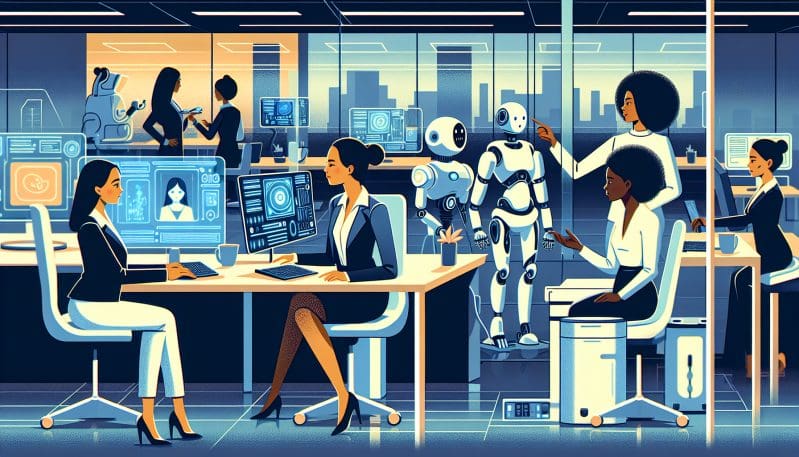The Future of Female Leadership: Navigating the Evolving Landscape of Work with AI and Automation
- Home
- The Future of Female Leadership: Navigating the Evolving Landscape of Work with AI and Automation
- Editors Desk
- March 13, 2024
- 0 Comments
As our world stands on the brink of an unprecedented technological revolution, driven by artificial intelligence (AI) and automation, the workplace is morphing in ways we have never before imagined. This seismic shift not only redefines the nature of work but also brings to the fore a critical question: What is the role of women in this rapidly changing job landscape? The promise of new opportunities comes hand-in-hand with challenges, particularly for women striving to ascend the leadership ladder. This moment of transformation is ripe for an exploration of how female leadership can evolve and thrive in the age of AI and automation.
In this article, we will delve into the burgeoning realm of opportunities that await women leaders in tech-driven environments. We will examine the intrinsic strengths that women bring to the table—empathy, collaboration, emotional intelligence—and how these can be pivotal in an automated workforce. Furthermore, we will discuss the strategies that can help women not only adapt but also become trailblazers in this new era.
The landscape is changing, and so must the tactics. Women can future-proof their careers by developing skills that are complementary to AI, such as creative problem-solving and interpersonal communications. Upskilling, reskilling, and continuous learning become the mantras for staying relevant. But individual effort alone is not the panacea. There is a need for robust support systems, both within organizations and from broader societal structures, to ensure that women have the resources and backing to succeed.
From mentorship programs to flexible work arrangements, there are myriad ways to support women in this transition. Companies need to design intentional pathways for women to step into leadership roles, especially in fields traditionally dominated by men. Policies should be updated to reflect the realities of the new workplace—pay equity, parental leave, and anti-discrimination laws must be strengthened to dismantle the systemic barriers that hold women back.
The conversation around AI and automation is often dominated by fears of job displacement, but for proactive and empowered women leaders, it can be a narrative of immense growth and opportunity. It’s time to shift the dialogue from what jobs will be lost to what new roles will be created and how we can prepare women to fill them. This is more than a call to action; it’s a summons to shape the future, where female leadership not only adapts but sets the pace for innovation and inclusivity in the tech-forward economy.
In conclusion, as AI and automation become integral to our professional lives, the potential for female leadership to reach new heights is palpable. By embracing change, advocating for equitable policies, and fostering a culture of continuous learning and support, working women can lead the charge in the workplace revolution. Let’s not just be participants in the future of work; let’s be the architects of it.

